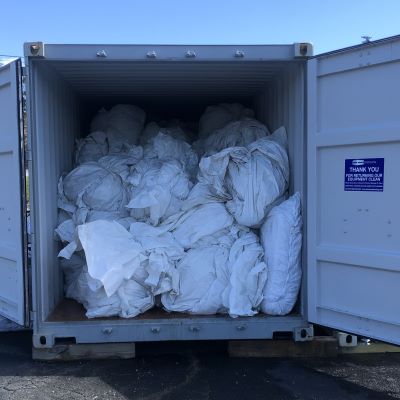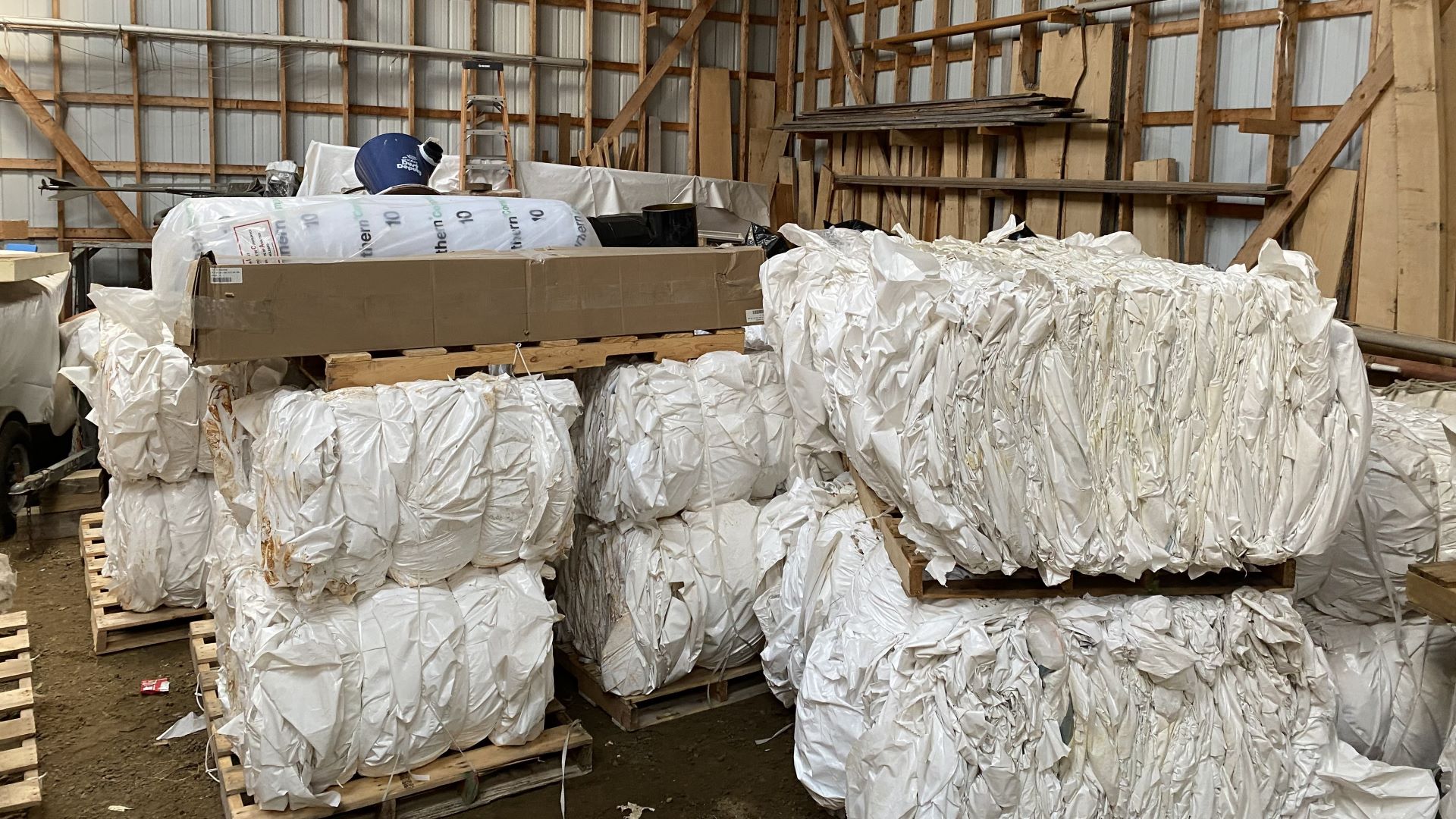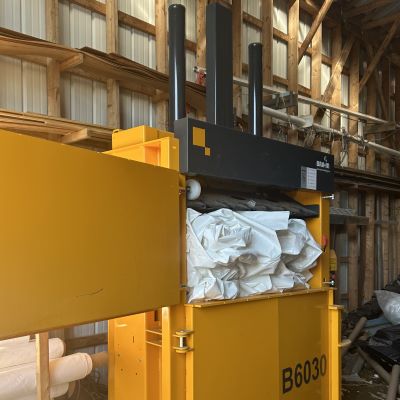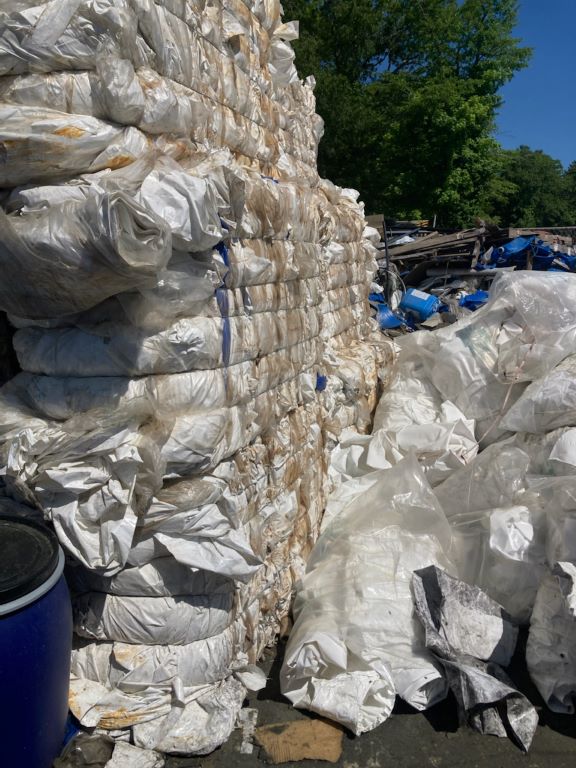The sun is shining, the birds are singing and the shrink wrap is coming off. The boat shrink wrap, that is — low-density polyethylene plastic prized for its flexibility and ability to keep vessels safe from the sleet, snow and rain of Maine winters. And most of it is going in the trash.
Maine has more than 100,000 registered boats. At an average of 15 pounds of shrink wrap per boat (a 30-foot boat requires about 30 pounds), that’s more than 1.5 million pounds of plastic coming off boats around the state each spring, the vast majority bound for landfills or incinerators.
While boat owners and officials would like to see shrink wrap recycled, like other plastic goods, there are “no real good solutions (for doing so) at this point,” said Elena Bertocci of the Maine DEP in an email.

Attempts to implement municipal shrink wrap recycling programs, like a pilot program in Belgrade in 2017, failed because there wasn’t a market for the material or the volume necessary to make it work. Belgrade also had trouble getting boat owners to return the material as clean or tidy as it must be for recycling.
“Our biggest challenge was participation,” said Kenny Scheno, transfer station manager for the town of Belgrade. It wasn’t for lack of trying — Scheno met with boatyard owners around the region who assured him they were excited and promised to bring all their wrap come spring.
But only a few showed up. Boatyard owners said their crews just didn’t have time to cut out all of the tape and vents and doors. “Maybe they thought it was going to be easier than it was,” said Scheno.
It took two seasons for the station to collect enough wrap for a single bale, which meant the material they did collect was taking up “a whole lot of storage space,” and attracting cats and rodents. The wrap colors, blue and white, couldn’t be put in the same baler even though they’re made of the same type of plastic, because recyclers want a single color. Scheno was also forced to reject a lot of the wrap because it had been stomped on or dropped in the mud, and was too dirty to be processed.
“It does take a little bit more attention to detail” to prep shrink wrap for recycling, said Eva Baker of Clean Ocean Access, a Rhode Island-based group that has implemented shrink wrap recycling programs throughout the Northeast. Baker met last week with Maine Marine Trades Association representatives to discuss expanding programs in the state, which has just a handful of participating boatyards.

To be recyclable, zippers, rivets tape and anything that isn’t actual shrink wrap must be removed, and the plastic must be reasonably clean — not left or dragged in the spring mud, as often happens in the rush to get boats uncovered and ready to splash.
Before it’s transported to a plant for recycling, the shrink wrap also has to be compressed into a block, which requires a baler — a piece of equipment that can run into the tens of thousands of dollars. Standard bales are about 1,200 pounds of plastic, which might mean waiting for enough boats to be uncovered and material to arrive. That requires storing large quantities of heavy, springy plastic until there’s enough for a full load, or leaving a baler partially full.

“People don’t want to tie up a baler to do that,” said Ben Rogers of Maine Mobile Shrinkwrap, which runs one of the only shrink wrap recycling programs in the state, when there are lots of other materials that must be compressed and shipped out.
Each fall and spring, Maine Mobile Shrinkwrap travels around Maine and parts of New England covering and uncovering all manner of objects — mostly boats, but also the occasional airplane and even a lobster shack. He and his company have been at it for about 18 years.
“We started the company and started covering boats, and didn’t really think about uncovering boats,” said Rogers. “We just thought about covering them in the fall and then no one really ever asked us to come back to remove the covers in the spring.” But just wrapping the boats left the company with a lot of pieces too small to use for full covers, and no good solutions.
“Like all plastic products, nobody wants to deal with anything unless you bale it,” said Rogers. So he bought an old baler — “It was small and sparky and not very useful, and made very small bales” — and compressed the material himself, offering to uncover customers’ boats and recycle shrink wrap in the spring.
Rogers estimates that around 10 percent, or around 200, of his customers pay extra to have their boats uncovered and the shrink wrap recycled, amounting to tens of thousands of pounds of shrink wrap annually. With the help of Clean Ocean Access, he recently bought a new baler that can handle larger amounts of plastic, with the hopes of expanding that aspect of the business.
But it’s hard for many boatyards to justify the cost of the extra labor to prepare shrink wrap for recycling, said Rogers, and much easier to just fill a dumpster with all the plastic and wood used to cover boats each year.

“You have to get paid to collect it and get paid for it to really make it worth it.”
Baker, of Clean Ocean Access, said one key to getting boatyards and boat owners to recycle their shrink wrap is to make it as easy to recycle as it is to throw something in the trash.
To that end, the organization hopes to expand its “Pay As You Throw” program in the state, in which customers fill a specialized bag with shrink wrap (bags cost $19 and hold about 30 pounds, or a 30-foot boat’s worth). The bags are then collected, compressed and sent to a plant in New Jersey, where the material is broken down and remade into things like plastic water bottles and grocery bags. Just six Maine boatyards participate in the bag program, most of them in and around Penobscot and Frenchman Bay.
Clean Ocean Access, which removed nearly 28,000 pounds of shrink wrap from Maine last year, would like to see the plastic used in a more “circular economy” — ideally, remade into shrink wrap or used for another marine application. But plastic, unlike metal or glass, degrades each time it’s reformed, so “we’re still figuring that out,” said Baker. The nonprofit would also like boat owners to consider other options, such as tarps and plastic or cloth covers that can be fitted to a boat and used for several years.
The organization hasn’t yet solved the problem that bedevils other recyclers and trash haulers in Maine — that the state is rural and the population spread out, which makes it difficult to collect enough material to justify — financially and carbon footprint-wise — driving it thousands of miles to be recycled.
Like most things in the world of recycling, “A lot of people like the idea,” said Rogers, “but it costs money.”
Kate Cough reports on the environment for The Maine Monitor. Reach her with other story ideas by email: gro.r1763362497otino1763362497menia1763362497meht@1763362497etak1763362497.








